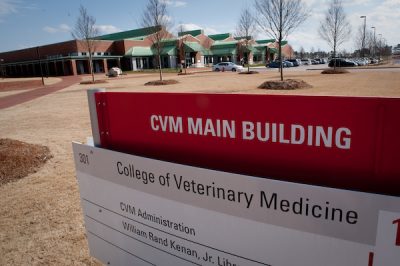Doctorate of Veterinary Medicine Programs
The Association of American Veterinary Medical Colleges, or AAVMC, provides comparison information and application requirements between the various veterinary schools within the U.S. For more information, you can view their website at this link.
Every DVM program has different application requirements. Most veterinary schools and colleges will require some combination of a VMCAS application, supplemental application, and interview process. Please visit each veterinary college’s website for exact instructions on applying. You can view a complete listing of the United States veterinary schools and websites via this link.
The cost of education varies significantly depending on what school an applicant chooses to attend and an applicant’s status of residency (whether they are in-state versus out-of-state). The cost of education (including tuition, housing, and living expenses) can range from approximately $40,000 per year (NC State, in-state tuition) to $134,000 per year (Ohio State, out-of-state tuition). However, some institutions allow conversion of out-of-state tuition costs to in-state after residing in that state for one year. It is advised to visit the websites of each veterinary school of interest to determine the estimated cost at each institution. CVM-NCSU’s estimates can be found via this link.
For a comparative list of vet school tuition costs,please visit this link.
For the latest statistics from across the nation, please visit this article.
The average veterinary college graduate debt is on the rise. Mean debt increased 8.5% between 2008 and 2009. Mean educational debt among those with debt was $129,976 in 2009, compared with $119,803 in 2008. Median educational debt was $125,000 in 2009, which was up 4.2% from 2008. Among all graduates, nearly a third (31.7%; 754) incurred a debt ≥ $150,000. All but 9.6% of the mean debt of graduating veterinarians was incurred while in veterinary medical college (as according to JAVMA, Vol. 235, No. 5, September 1, 2009, “Vet Med. Today, Facts & Figures.”).
A recent study conducted by the AVMA revealed the average four year cost of in-state and out-of-state seats for the Class of 2015 graduates was $103,327 and $191,710 respectively. The average debt incurred by the students who filled those seats was $132,560 in-state and $187,379 out of state (as according to JAVMA, Vol. 247 , No. 12, December 15, 2015, “AVMA report gives specifics on student debt quandry.”)
You can attend some vet schools as an “out-of-state student,” and each school has their own requirements for becoming a resident. Some schools allow you to apply for residency and transition to being an in-state student; while others do not allow a transition at all. You can use the map of vet schools below to see if a school allows a student to establish residency as an out-of-state student via this link.
Vet school can be very expensive, but there are many ways to get help paying for school and living expenses. Each institution offers school-based scholarships that students can apply for. To learn more about these scholarships, please contact the school of interest directly as they can tell you more about what they offer. You can also use the Cost Comparison Tool on AAVMC’s Website to see the average cost of each institution’s tuition, the average amount of students receiving scholarships by institution, and cost of living for that state. You can access the Cost Comparison Tool here.
Students may also apply to federal, private, and personal student loans. There are also career-specific loan repayment programs that students may qualify for; these include the US Army, Rural and Food Animal Practice, and Research and Academic Careers. To learn more about any of these options, please visit this link.
